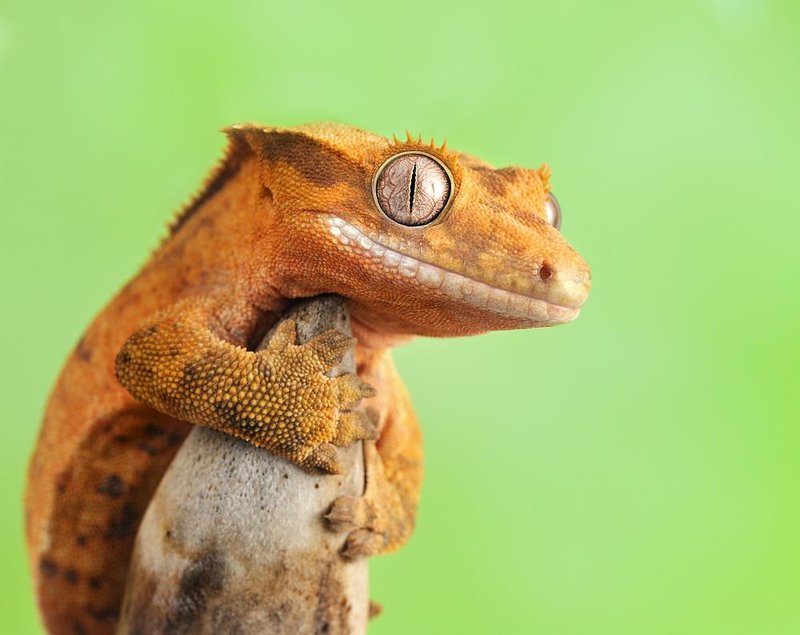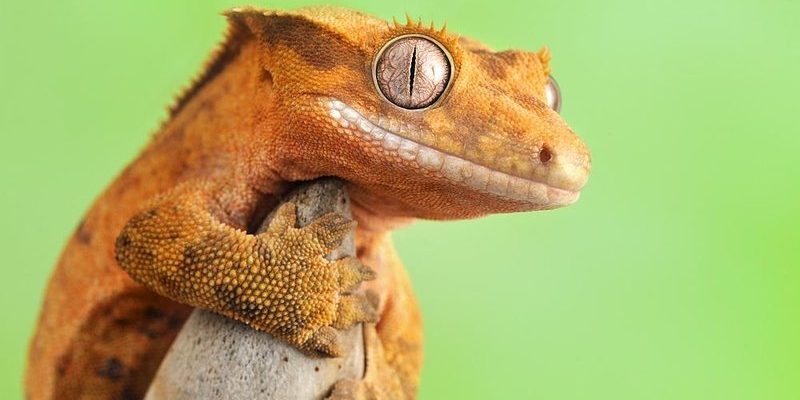
In this article, we’ll explore the fascinating ways the crested gecko not only survives but thrives in harsh environments. From its unique physical features to clever behavioral strategies, these geckos show just how resilient nature can be. So, grab a cup of coffee, and let’s dive into the remarkable world of the crested gecko!
Physical Adaptations of the Crested Gecko
One of the most striking things about the crested gecko is its physical appearance. With its large, expressive eyes and soft, velvety skin, it’s hard not to be charmed. But there’s more to these geckos than just looks. Their unique features play a crucial role in survival.
First, let’s talk about their adhesive toe pads. These specialized pads allow crested geckos to climb smooth surfaces with ease. Whether they’re navigating the high branches of a tree or finding shelter in rocky crevices, these toe pads provide excellent grip. You might be wondering how they work. Essentially, tiny hair-like structures called setae create weak molecular attractions to surfaces, allowing the gecko to stick without any effort.
Then there’s their camouflaging ability. Crested geckos can change their color slightly, blending in with their surroundings to avoid predators. This not only keeps them safe but also helps them sneak up on their prey. Think of it as a built-in invisibility cloak that aids in both evasion and hunting.
Behavioral Strategies for Survival
Behavior plays a huge role in how crested geckos manage their harsh environment. They’re not just passive creatures waiting for food to come to them; they have developed smart strategies to ensure their survival.
One of the key behaviors is their nocturnal lifestyle. Crested geckos are primarily active at night, which helps them avoid daytime predators like birds. By staying hidden during the day, they conserve energy and wait for nightfall when it’s safer to hunt for insects and fruit. This is similar to how some animals, like owls, have adapted to thrive in the darkness of night.
Additionally, crested geckos are known for their parachuting abilities. If they feel threatened, they can leap from heights and use their flat bodies to glide down safely. It’s like having a built-in parachute, allowing them to escape danger while covering considerable distance. This strategy is not just for fleeing predators; it also lets them access different parts of their habitat, from feeding spots to safe resting places.
Diet and Feeding Habits
When it comes to survival, finding food is paramount. Crested geckos are omnivores, which means they eat both plants and animals. Their diet primarily consists of fruits and insects, but they’re not picky eaters.
In the wild, these geckos feast on ripe fruits like guava and papaya, as well as insects like crickets and mealworms. Their strong sense of smell helps them locate food sources in their environment, even when they’re hidden. By being flexible in their diet, crested geckos can thrive in varied habitats, whether food is plentiful or scarce.
Interestingly, they can also go long periods without food. This ability is crucial during dry seasons when food is hard to find. Their slow metabolism allows them to survive on stored energy until conditions improve. Think about it: it’s like having a built-in reserve for tough times!
Climate Adaptations
Crested geckos originally hail from a warm, humid environment, but they’ve developed impressive adaptations to survive in fluctuating climates. Their skin plays a critical role in regulating moisture.
The smooth skin of the crested gecko minimizes water loss, which is essential in a drying climate. Unlike many reptiles that bask in the sun to regulate their body temperature, these geckos prefer cooler, shaded areas during the hottest parts of the day. This helps them stay hydrated and avoid overheating.
Moreover, during colder nights, crested geckos can lower their metabolic rate, which allows them to conserve energy. It’s pretty remarkable how they’ve evolved to adapt to their surroundings, keeping themselves safe and healthy despite environmental challenges.
Predator Evasion Techniques
Life in the wild can be dangerous, and crested geckos have some clever tricks up their sleeves to stay alive. When faced with predators, their first instinct might be to freeze in place—a tactic that can help them blend in with their surroundings.
But if that doesn’t work, they have another defense mechanism: autotomy. This means they can shed their tail to escape a predator’s grasp. While it sounds extreme, losing a tail doesn’t harm their chances of survival. In fact, it can serve as a distraction, allowing the gecko to flee while the predator is confused by the wriggling tail.
After a while, the gecko can regenerate its tail. It’s fascinating how nature provides second chances, isn’t it? This ability to regenerate helps ensure their survival in an unpredictable world filled with threats.
Conservation Status and Threats
Despite their adaptability, crested geckos face several threats in the wild. Habitat destruction due to human activities, like deforestation, poses a significant risk to their survival. As their natural habitats shrink, their food sources become scarce, challenging their ability to thrive.
Additionally, these geckos are vulnerable to invasive species, which can disrupt their ecosystems. For example, rats and other introduced predators can easily prey on crested geckos, further threatening their population.
Conservation efforts are crucial to ensuring these fascinating creatures continue to thrive. Protecting their habitats and raising awareness about the importance of biodiversity can make a significant difference. After all, preserving the crested gecko means preserving a little piece of the incredible web of life on Earth.
The crested gecko is a true testament to nature’s ingenuity. With its unique adaptations, clever behaviors, and remarkable resilience, it showcases how life can thrive even in the face of harsh environments. From its adhesive toe pads to its fascinating feeding habits, everything about this little lizard is a reflection of survival.
Understanding how the crested gecko survives not only enriches our appreciation for these amazing creatures but also highlights the importance of protecting their habitats. As we continue to learn about them, let’s not forget to advocate for their survival in the wild. After all, every little lizard tells a story of resilience and adaptation in the grand tapestry of life.

